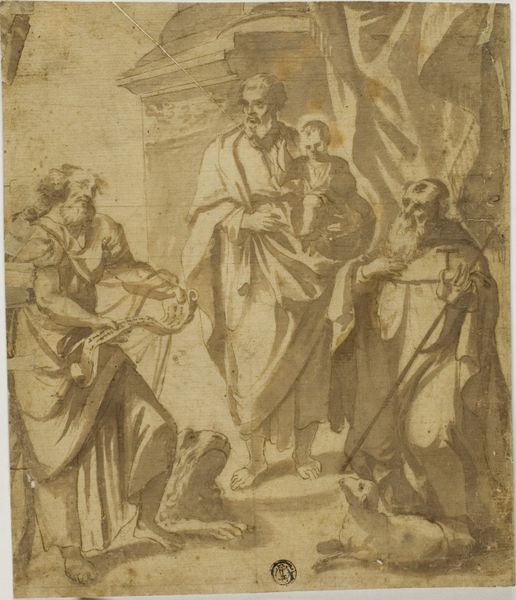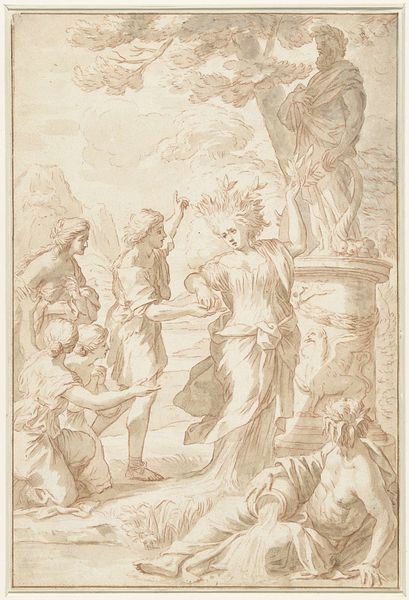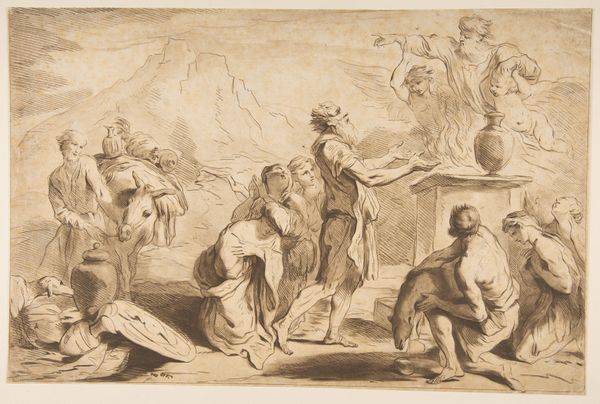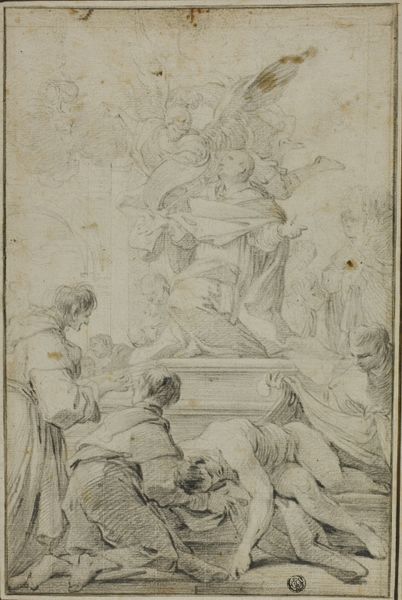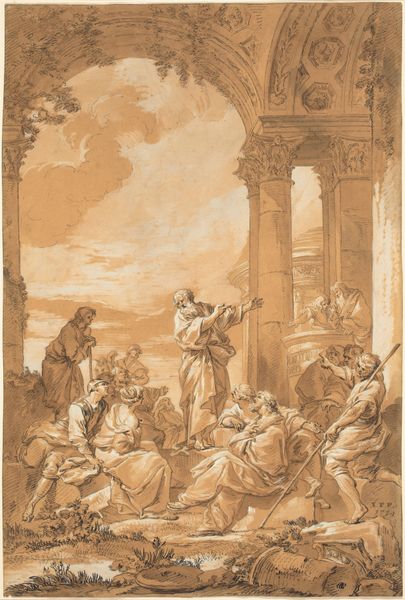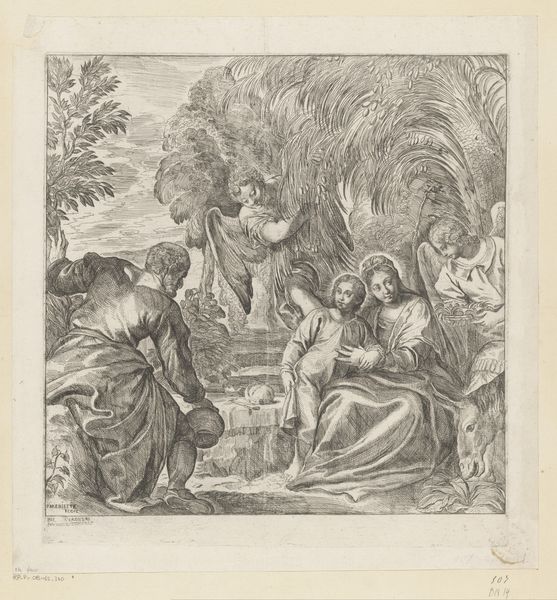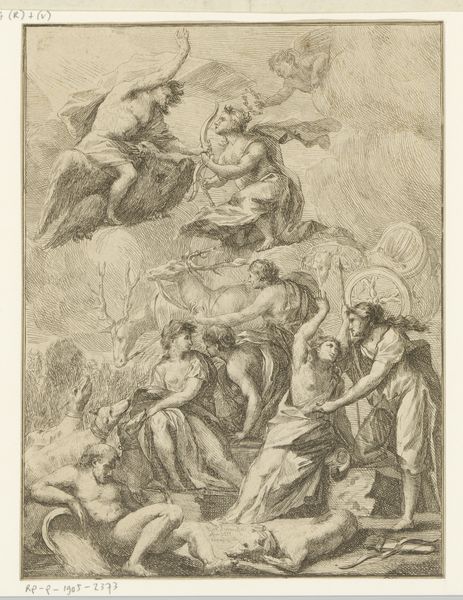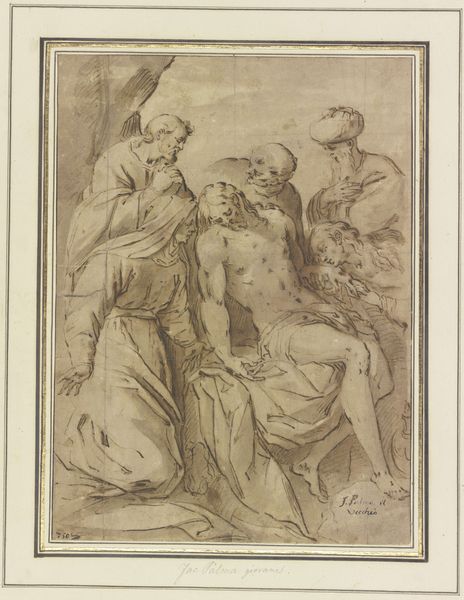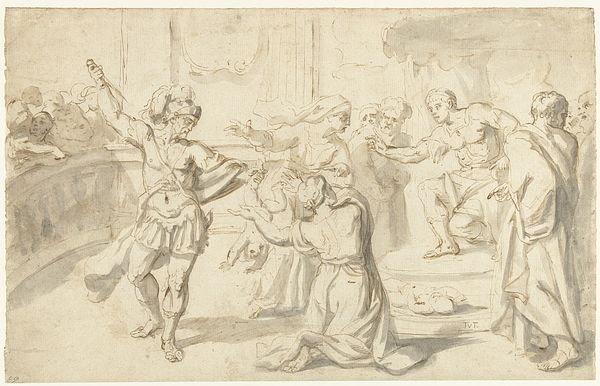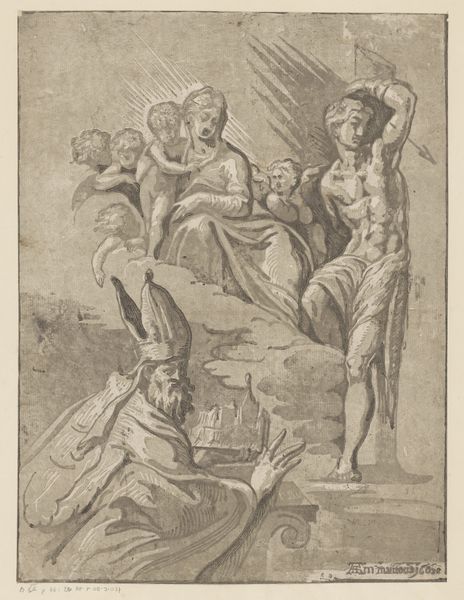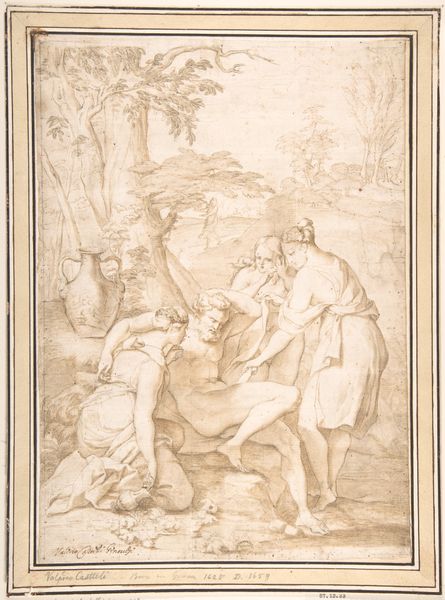
Dimensions: sheet: 21 3/16 x 16 5/8 in. (53.8 x 42.3 cm)
Copyright: Public Domain
Curator: Here we have "Christ and the Woman of Samaria" by Annibale Carracci, created sometime between 1560 and 1609. It is currently held at the Metropolitan Museum of Art. Editor: My initial impression is one of graceful disquiet. The monochrome sepia washes create a soft, almost dreamlike state. The scene has a wonderful composition with Christ and the woman front and center, anchored by that wonderful circular well. Curator: Absolutely, and let's unpack that "disquiet." The story itself is revolutionary. Jesus, a Jew, speaks with a Samaritan woman, someone considered an outsider both religiously and ethnically, breaking multiple social taboos of the time. This is about challenging established hierarchies. Editor: The dynamism in Carracci's line work contributes a narrative force of its own. Consider the use of shading to sculpt the folds in Christ's robes or the subtle variations in tone that delineate the architecture. I would add that there’s this remarkable contrast between the organic forms of the foliage and the geometric rigidity of the well and the classical column, suggesting a tension between nature and artifice. Curator: Precisely! The tension embodies the pivotal, transgressive moment in the narrative where traditional boundaries—represented by the rigid structures—are questioned by the compassionate, embracing figure of Christ. This extends to the marginalized woman; she is given a space in a patriarchal society. The artist boldly challenges cultural norms by illustrating their interaction. Editor: There is also great compositional balance in the piece. The crowd is framed perfectly by a receding architectural background to the left, with nature and a well-positioned pillar supporting the pair on the right. Curator: A brilliant observation, one that invites consideration of art as an active agent in cultural change! Carracci isn’t just illustrating a biblical scene; he's advocating for a society that is open and just. Editor: Considering the technical refinement in the work, it is fascinating how much emotional resonance the picture still has. The picture does possess both technical brilliance and profound expressive depth. Curator: Yes, the dialogue between the artist and subject allows for us to reconsider contemporary notions of otherness and the continued necessity of societal discourse that champions equality. Editor: Well said. The artist, though centuries removed from our era, can speak so deeply about form and history, reminding us of fundamental dialogues about what we are looking at and what those things signify.
Comments
No comments
Be the first to comment and join the conversation on the ultimate creative platform.


